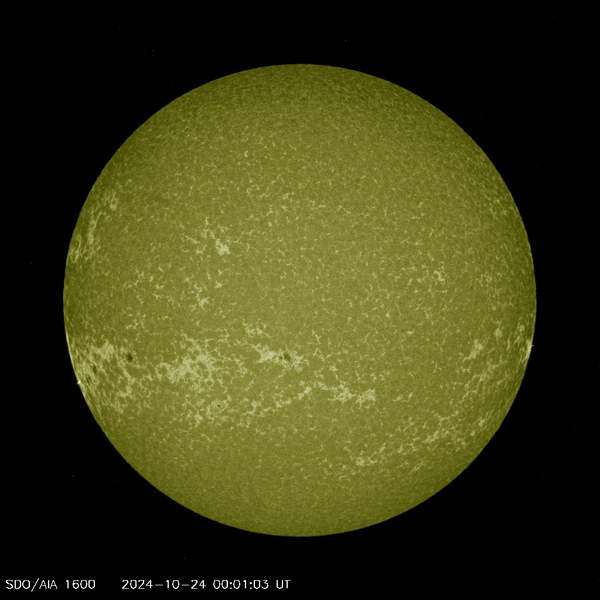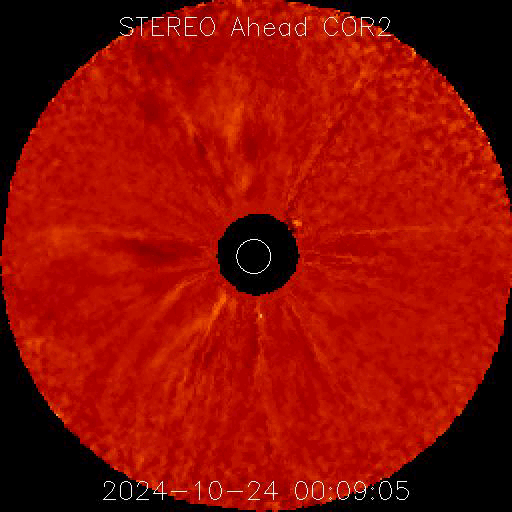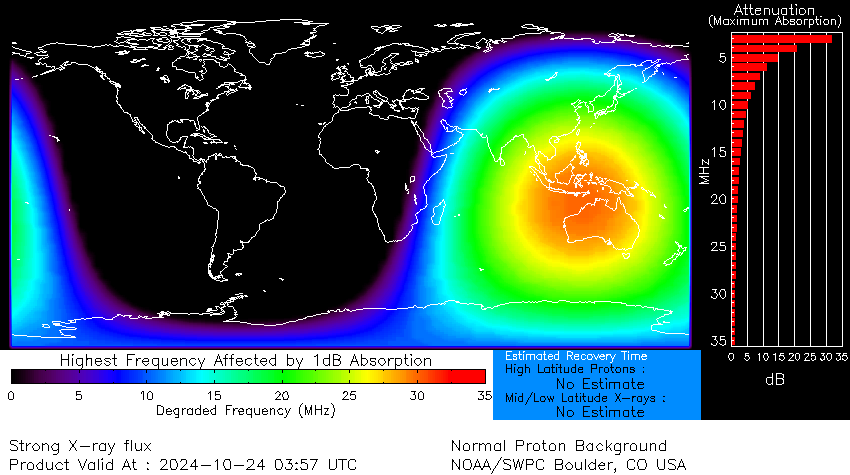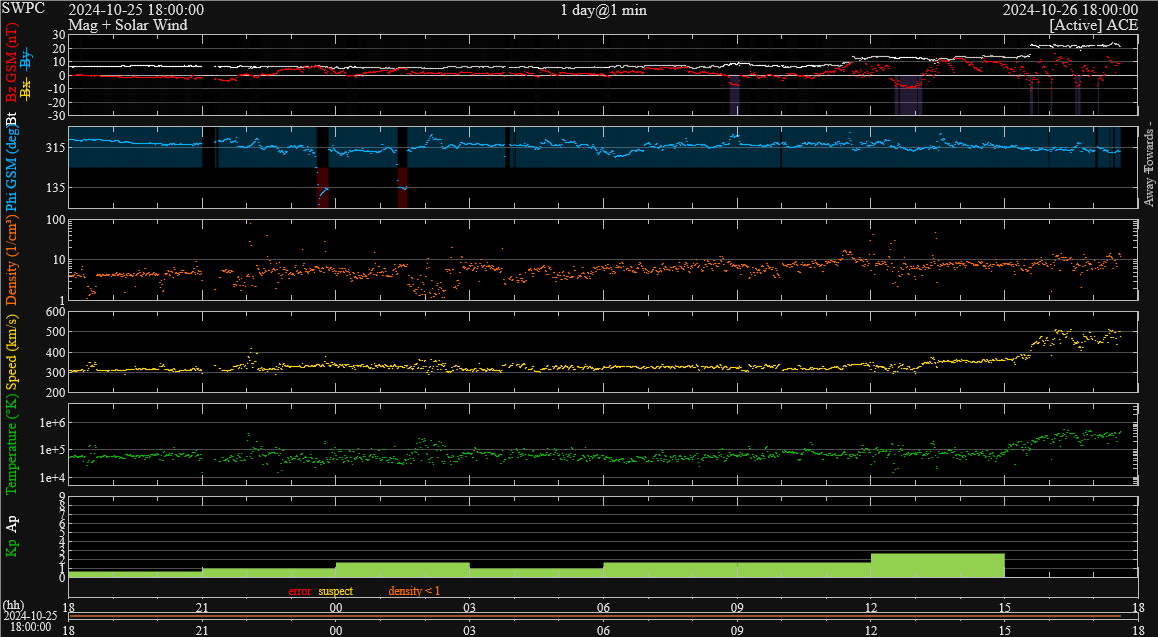UPDATED - Please scroll down
An X3.3 flare was observed from NOAA 3869, a sunspot region near the southeast solar limb. The flare peaked on 24 October at 03:57UTC (GOES). The clip underneath shows the evolution and location of the flare in extreme ultraviolet images taken by SDO/AIA 1600.

Preliminary coronagraphic imagery show the flare was associated with a asymmetric halo coronal mass ejection (CME). Coronagraphic images by STEREO-A, a satellite currently preceding the Earth in its orbit by 27 degrees (Stereo Science Center), indicate this is a quite fast CME with a plane-of-the-sky speed of 1200-1400 km/s. Sparse SOHO/LASCO C3 images seem to confirm this speed (1350 km/s). A clip of the CME, as recorded by the STEREO-A/COR 2 instrument, can be seen underneath. Though the bulk of this CME is directed away from the Earth, it seems to have an earth-directed component that may produce a glancing blow later this week. Standing-by further analysis by the SIDC forecaster for a more accurate timing and prognosis of the strength of the associated geomagnetic disturbance.

The greater than 10 MeV proton flux is currently at background levels (GOES). The entire radio frequency band was affected for 1 to 3 hours by radio emission from this flaring event (NOAA/USAF). GNSS (GPS, Galileo,...) frequencies were affected the least (maximum of 850 sfu), the strongest radio burst was recorded at the frequency of 2695 MHz (solar radio flux) with an intensity of 5900 sfu. The image underneath is a radio spectrogram recorded by the Learmonth Observatory in Australia and showing the Type II radio burst which is indicative of a CME.

The X-class flare affected the lower frequency portion of the High Frequency communication band (HF Com ; 3-30 MHz) mainly over Australia and Southeast Asia. This can be seen on the D-RAP map underneath (NOAA/SWPC). An advisory to civil aviation has been issued (PECASUS ).

UPDATES
UPDATE 24 October 2024 at 18:00UTC - From the SIDC SWx forecaster: "... A fast halo coronal mass ejection (CME) was observed in SOHO/LASCO-C2 coronagraph data starting at around 03:48 UTC on October 24. The CME is directed primarily to the southeast from Earth's perspective and is associated with the X3.3 flare from NOAA AR 3869, along with Type II and Type IV radio emissions detected at 03:46 UTC on October 24. The CME has an estimated velocity exceeding 1300 km/s. While the bulk of the ejecta is expected to miss Earth, a glancing blow could potentially arrive on October 26. ... Unsettled conditions, with possible isolated active and minor storm periods, are expected on October 26-27 due to the arrival of a high-speed stream and the possible arrival of an ICME. ..."
UPDATE 26 October 2024 at 18:00UTC - From the SIDC SWx forecaster (PRESTO ALERT): "... A shock was detected in the solar wind data around 15:35 UTC on October 26. The interplanetary magnetic field (IMF) jumped from 14 nT to 22 nT, and the solar wind speed increased from 370 km/s to 440 km/s. The shock is related to an ICME arrival, likely associated with a halo coronal mass ejection observed early on October 24. Currently, geomagnetic conditions are unsettled both globally (Kp ; NOAA) and locally over Belgium (K_BEL). Geomagnetic conditions are expected to be disturbed, with active to minor storm conditions possible depending on the Bz component. The greater than 10 MeV proton flux, as measured by GOES-18, increased sharply following the shock arrival, reaching a maximum value of 9 pfu at 16:35 UTC on October 26. The greater than 10 MeV proton flux is expected to remain elevated with a chance of exceeding the minor storm levels in the coming days. ..." The map shows the solar wind data as recorded by DSCOVR, with the white curve the total strength of the IMF, and the yellow curve for the solar wind speed.






